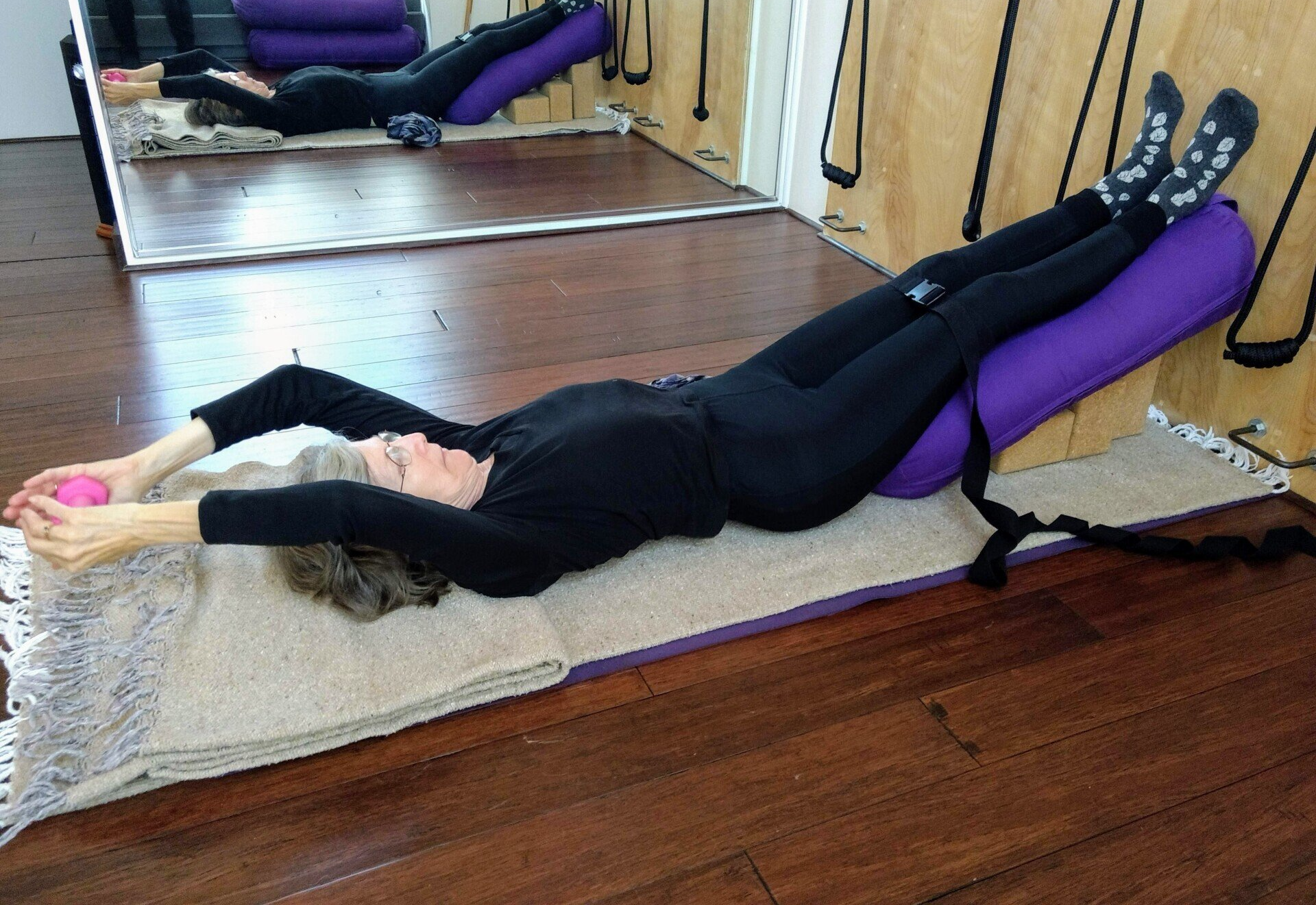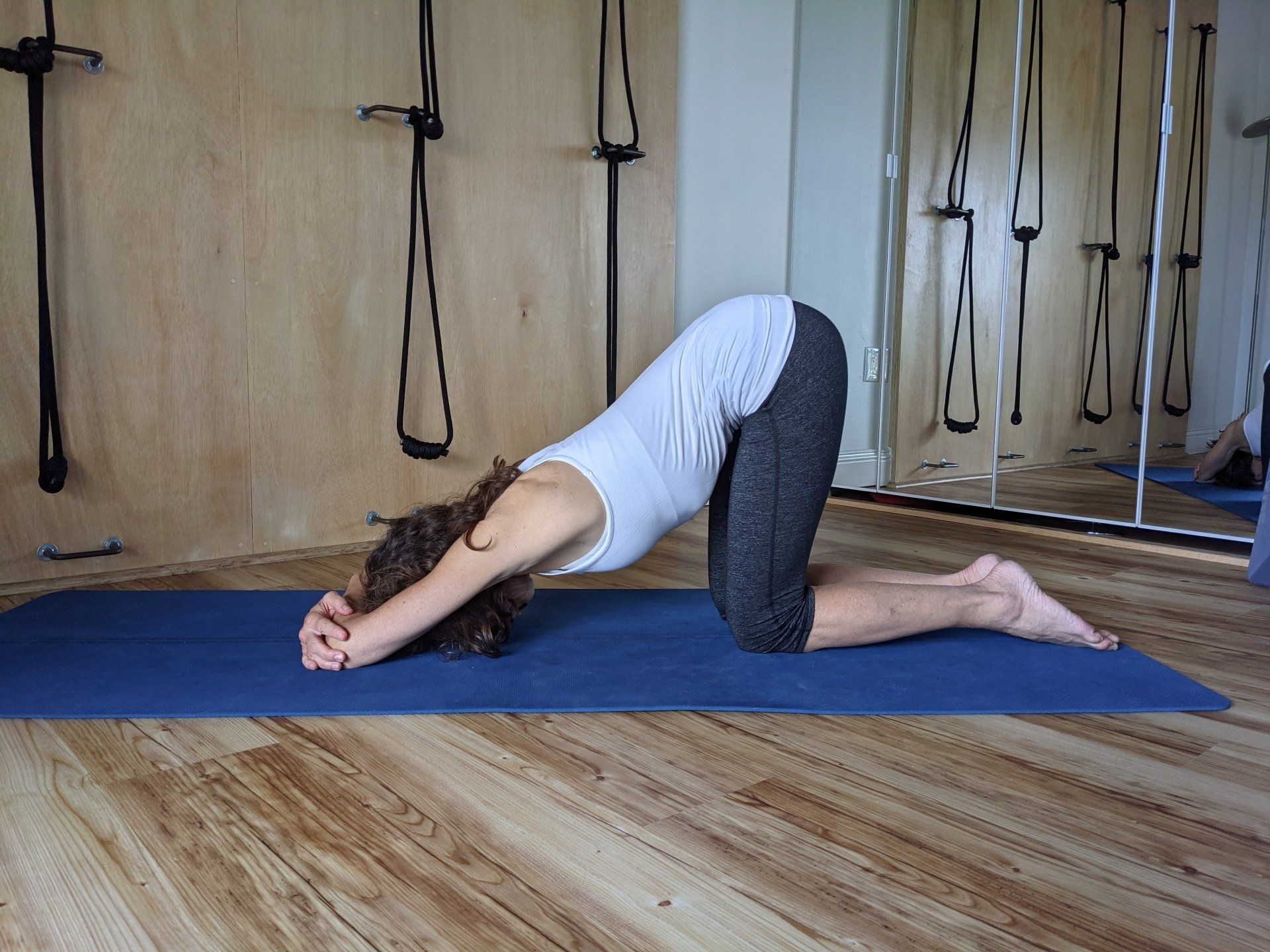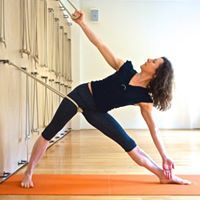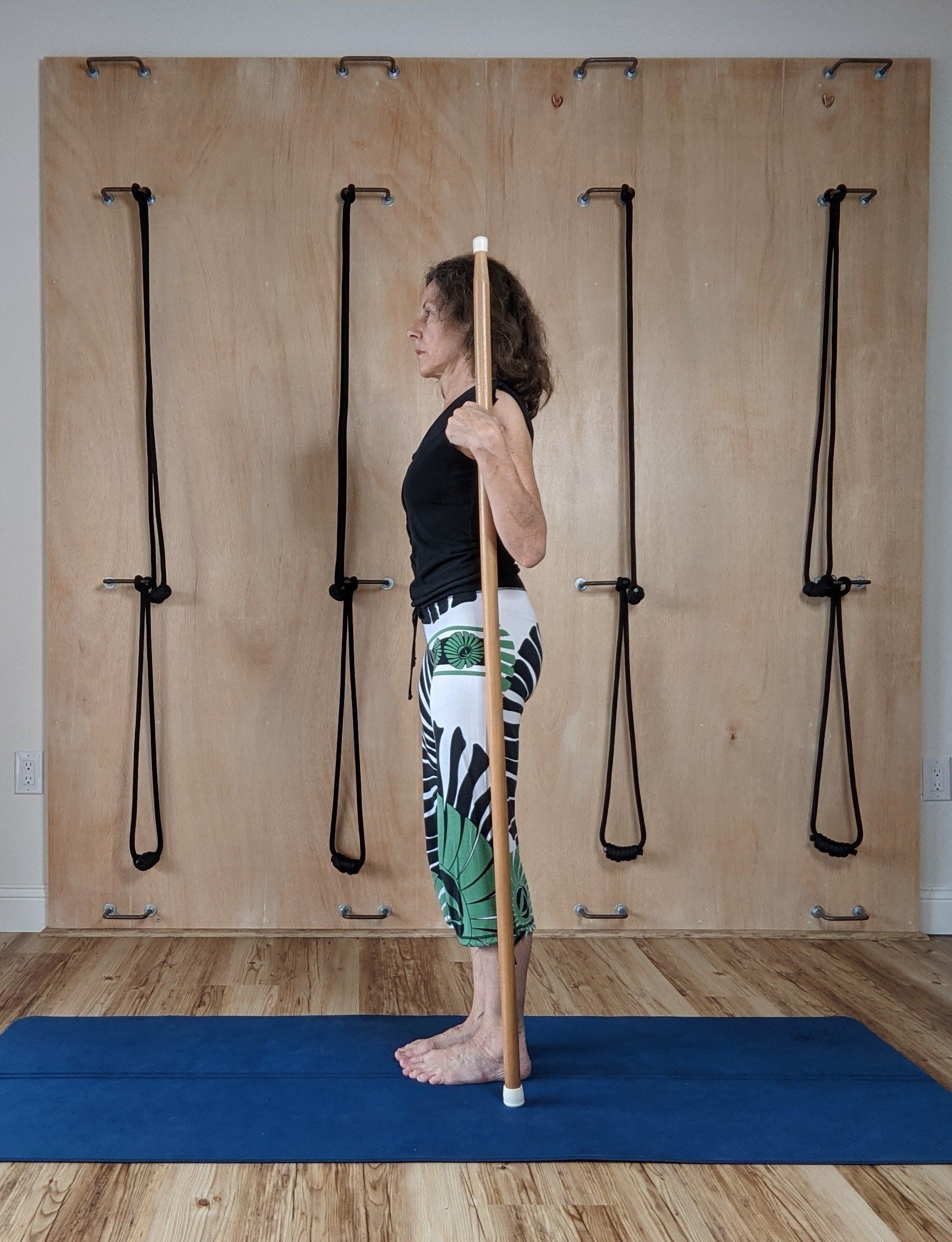Let's Talk About The Core
Jane DoCampo • April 30, 2022

Best core exercises for back pain
We all hear that we should strengthen our core to improve back pain. The first image that probably comes to mind is old fashioned sit-ups, crunches, or pilates type leg lifts while directed to flatten the lumbar curve. In fact, when lying down to address core work, the number one question new students who come to me with back pain ask me is, "Should I flatten my lower back to the floor?" The answer is NO! NEVER!
What these exercises have in common is a shortening of the front body. Anyone who: sits or stands in a slouched position; carries a baby with their hips swayed forward; spends a long time on a computer with their arms out in front of them; or who has text neck, is already too short in the front body and overly long in the back body (which includes a flattening in the lower back and back of neck). The above exercises would only increase that pattern.
More than that, if core strength is prescribed for lower back pain, and the pain is stemming from nerve pain, degenerative discs, herniated discs, stenosis, retrolisthesis, or excessive lumbar lordosis, these exercises could be very dangerous, as lumbar flexion is contraindicated for all of these conditions.
For safety, keep your spine neutral
It is valuable to have MRI imaging to have an exact diagnosis, but, especially for the adult body, better safe than sorry. The safest core exercises are performed with a neutral spine, one that does not flex 'flatten' or extend 'arch' the lumbar spine.
Should I use a back brace?
Don't rely on a back brace. It is the job of our core muscles, not a back brace, to keep the lumbar spine safe and stable. It is mandatory that we learn, and grow strong enough, to hold our vertebrae in centered joint positions with a small lumbar curve intact (not a large curve or a flattened one), to be free of back pain. Exercises (with modification for different ability levels) like leg lifts, planks, or triangle in yoga, challenge our core to hold the spine steady in varying positions.
Think of this as a bracing activity of the core to not allow the spine to bend while challenging it with the weight of the legs in leg lifts, with the weight of the pelvis and head in plank, or with the weight of the torso and head in triangle.
Relaxing and expanding the core is as important as training it to contract
We need to spend time relaxing the core and letting the muscles move through their full range of motion to be strong. As in, take off your spanx or stop slouching in front of the computer! Spend time lying on your side, or stretching out on your back with as little pillow as possible, (or better yet, hang from a pullup bar), and let the breathing muscles move your belly. If you watch a sleeping baby breathe, you will see a rise and fall in the belly. Muscles that are always held tense, tight, short, or overly long, are weaker muscles. If you watch an older person breathe who has lost the connection to their core muscles, even when they are sleeping, you may only see their chest move, rather than the belly.
Core muscles begin with your pelvic floor muscles
It also seems to be a little recognized fact that core muscles begin at the bottom of your pelvis in your pelvic floor. All the muscles in your pelvic bowl, in fact, not just your waistline muscles, need to support your spine.
Pelvic muscles assist with lifting and bearing down core activities
Bracing is not the only job of the core. There is the responsibility while standing, bending, and picking up objects, to lift and hold some weight off the lumbar spine... to share the workload. Another lifting activity, is preventing the bladder contents from leaking until a bathroom is available.
Bearing down strength is also required. Think about childbirth, or going to the bathroom, where muscles are required to push out.
Pelvic floor dysfunction
Things that can cause the pelvic bowl muscles to underperform, or become dysfunctional, are pelvic position, whether sitting or standing, and head/shoulder position. Stand up, sway your hips slightly forward toward your toes, and feel the pelvic bowl muscles turn off. Now, draw your hips slightly back just above your ankles, and feel the subtle support from the pelvic bowl muscles. Similarly, notice the difference forward head and shoulder positions, versus upright posture, have on the pelvic bowl muscles.
Relaxation and expansion are also especially important for pelvic muscles as many people are chronically tense which is another aspect of pelvic floor dysfunction. Yoga positions that allow a relaxed expansion of the pelvis such as supta baddha konasana, side lying, or gentle inverted positions are exceedingly useful for this purpose.
Please contact me if you need help with core strength for back pain, or pelvic floor dysfunction!

Nearly any article I come across for improving back pain will invariably recommend the cat/cow exercise (a repeated arching and rounding of the spine). This is a thoughtless, rather than thoughtful addition to a sequence for back pain. Anyone providing recommendations to total strangers should only include harmless exercise with consideration of what potential serious issues can be creating back pain. While some people searching the internet for back pain relief may have no damage in their spine whatsoever, many have serious issues for which cat/cow is contraindicated and harmful such as: disc herniation; spinal stenosis; spondylolisthesis; or scoliosis. Cat/cow would aggravate and worsen each of these conditions. Moreover, when a spine is in enough distress that someone is searching for relief, often in the form of back spasms or the feeling of a pulled muscle, that spine will respond much better to stability work performed in neutral spine alignment rather than excessive motion. In fact, most likely the reason an otherwise healthy spine would be in distress, would be because of lack of awareness of neutral spine alignment as they were performing some task, exercise, or just sitting or standing in misalignment. A muscle in spasm is asking to return to its normal resting length rather than being stretched. The takeaway here is that it is much better and useful to teach neutral spine work rather than repeatedly and mindlessly including cat/cow not knowing what brought the reader to you. If you would like to learn neutral spine work, contact me at SarasotaScoliosis.com. Jane DoCampo is certified by the International Association of Yoga Therapists and is a NASM corrective exercise specialist specializing in scoliosis, herniation, and pelvic floor dysfunction.

Many of us share this story: We attend a yoga class or two, return with increasing regularity, and soon make room in our lives for our practice. (Some of us even organize our lives around our practice.) It's something we can't pinpoint at first, but we recognize its goodness, the way we feel after practice, and it keeps us coming back. Yoga is endlessly fascinating, asking us to coordinate our body parts into a vast array of shapes and examine our possible resistance (physical or mental) to said shapes. There is the excitement of feeling stronger and progressing as gradually we gain understanding of opposing energetic forces, inner & outer body awareness, how our breath mobilizes the body and makes the whole practice a moving meditation. I moved through this progression over years, eventually becoming a teacher of students of all ability levels, striving for more clarity and precision in my teaching, working to keep my students safe and aligned (and safety is a challenge for so many reasons: a student could have innate postural imbalances that aren't being properly addressed as they practice leading to injury; they may push ahead into a shape before they have all the information to proceed knowledgeably; they may be working in a way that creates instability when what everyone needs is stability, etc.). And then I began studying with Alison West of Yoga Union, NYC and learned the Ropes! Wall ropes are an unmatchable teaching tool. They are a speed course to greater understanding, strength and refinement of the asana practice. In the hands of a skillful teacher, they retrain your body, your proprioception and correct imbalances. Ropes let you feel with great clarity the intent behind each pose and keep your body safe in increasingly deeper shapes. You feel even better after a ropes practice because you've tractioned your spine and avoided working in habitual, negative postural patterns. And when you practice out of the ropes, you take that knowledge with you for a safer, more productive practice. For beginning and advanced practitioners, those, like myself, working with herniation or scoliosis, athletes who become imbalanced from playing a one-sided sport, or those recovering from other injuries, wall ropes are a wonderful tool to inform and work productively to improve their backs and entire bodies and stay as strong as you want to be! I see remarkable results in my students and feel limited when I'm teaching without this equipment.
